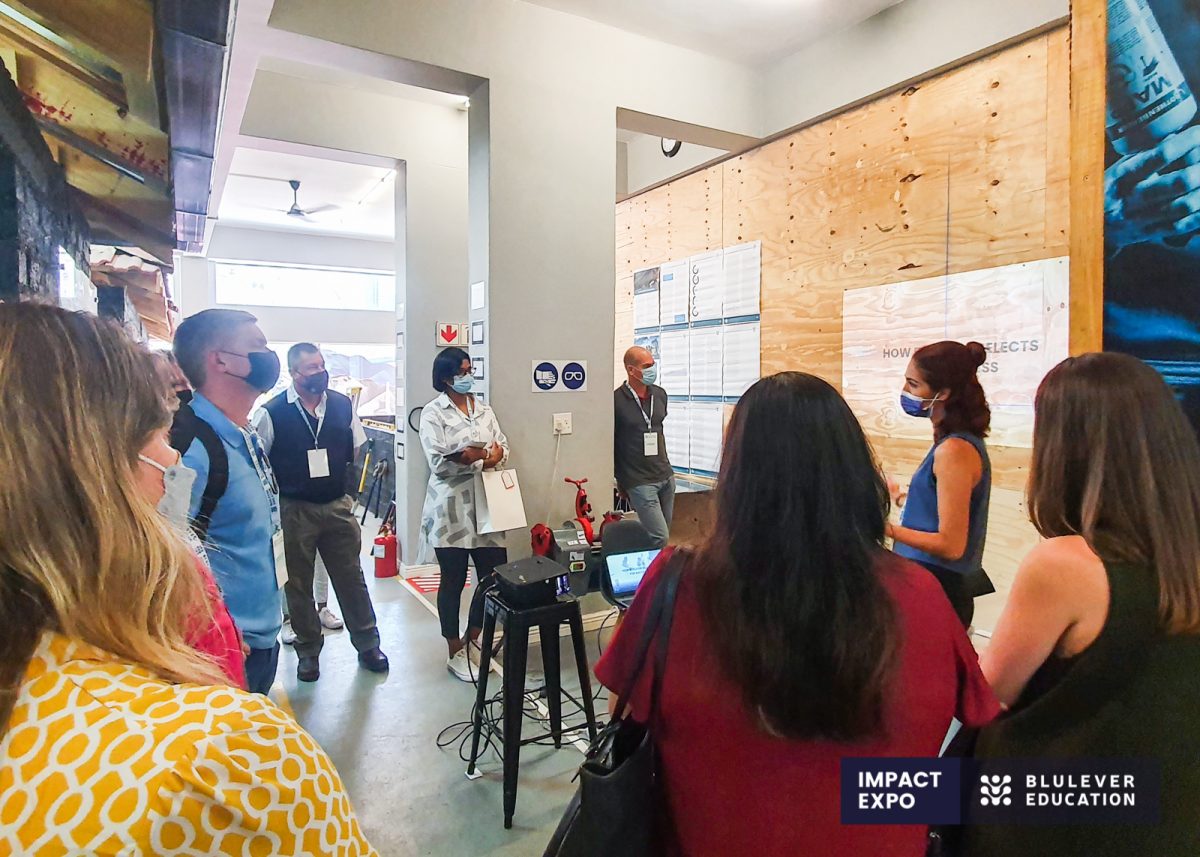
On 4 February BluLever Education hosted an Impact Expo to introduce aspiring learners to the new face of trade apprenticeships.
In 2018 BluLever was born out of an industry need for more and better qualified artisans. What broadly existed previously was an ineffectual training system that bleeds money and does not serve the interests of either industry or the swelling population of unemployed and often unemployable youth. BluLever is a member of IOPSA (Institute of Plumbing SA).
Adam Collier, co-founder of BluLever Education, says: “We have come a long way since then, launching our inaugural campus and trade apprenticeship; adding value to the artisan ecosystem in many ways.”
Fellow co-founder Jess Roussos opened the Impact Expo as follows: “When we started BluLever we did a considerable amount of research to make sure we understood the needs and gaps that millennials and employers were both experiencing, and the challenges that the industry was experiencing, as well as the opportunities.
“From this we developed a paper called the Artisan Report, which identified several strong opportunities and challenges around how young people come into this industry:
- Mindset of millennials: “This is a familiar one to business owners who often find upon employing a millennial that young people have a poor attitude and don’t have the right mindset to accept the responsibility of a job. This prompts the challenge of how to get young people ready to accept an opportunity, and how to navigate the cultural gaps between millennials and their older counterparts,” says Roussos.
- Matching and status: “This uncovered a lowered perception of the status of artisanship as a career, prompting us to look at how to shift perceptions of this status. Because the artisan has a relatively low status perception as a career option it becomes difficult to get young people into this space, and matching becomes an issue. We have had people coming into plumbing/artisanship who are not well suited to it,” she says.
- Unqualified and poorly qualified artisans: How do we face the challenge of having artisans in the market who are unqualified to do the jobs that they need to do, and who don’t do good quality work.”
Some of the comments made by employers about the challenges they face with employing young people (prior to BluLever’s ground-breaking model) include: “Mindset is a big issue, apprentices take their opportunity for granted and see themselves as already having the job and so lose their work ethic or dedication.”
Another said: “The discipline of most students is poor. They had a culture of entitlement.”
“We don’t have a numbers challenge in terms of getting people in, we have a challenge with getting the right people in.”
These insights from BluLever’s report and comments from employers set the tone for the manner in which BluLever recruits millennials into its programme, by ensuring it finds the best people, and then the programme itself is designed to ensure they are workplace ready.
The selection process is a rigorous one which aims to let through only the best candidates. Over one thousand students can apply – having typically heard of the Harambee-funded programme through social media – of which only 30 (or 3%) actually make it into the apprenticeship cohort, split 50/50 between males and females.
A large part of the process is something called Finals Day. At BluLever’s Braamfontein campus the finalists go through three steps:
- An in-person interview where the assessors get to know them and gauge who the candidate really is, their characteristics and competencies
- A facilitated class activity where they are assessed to see how they work with people and in groups, by testing their problem solving ability and team-building skills, essentially their teachability, and
- A hand skills test which determines whether they are able to actually work with their hands. People ‘say’ they’re good with their hands, but this puts it to the test
“The purpose of this process is to select only candidates that have the potential to be an apprenticeship and have the passion and interest to ultimately become a plumber, so that the valuable job-creation opportunity is not wasted on someone undeserving or uninterested in devoting the next three years of their lives to it,” explains Roussos.
This process determines how much people want an opportunity like this. This is an apprenticeship opportunity that really wants to educate people and take them to the next level in their lives and careers.
More news
- Big 5 Construct Kenya returns to Nairobi in November connecting 150 exhibitors with over 8...
- Webinar Highlights Decarbonising Strategies for Transport and Logistics Sector in Africa
- World Cement Association will be holding its Annual Conference on 24th – 25th October 20...
- Leading African companies and individuals named as finalists of the Big 5 Southern Africa ...
- Ministerial Forum a top feature at Big 5 Construct Ethiopia, alongside 20 CPD-certified In...

